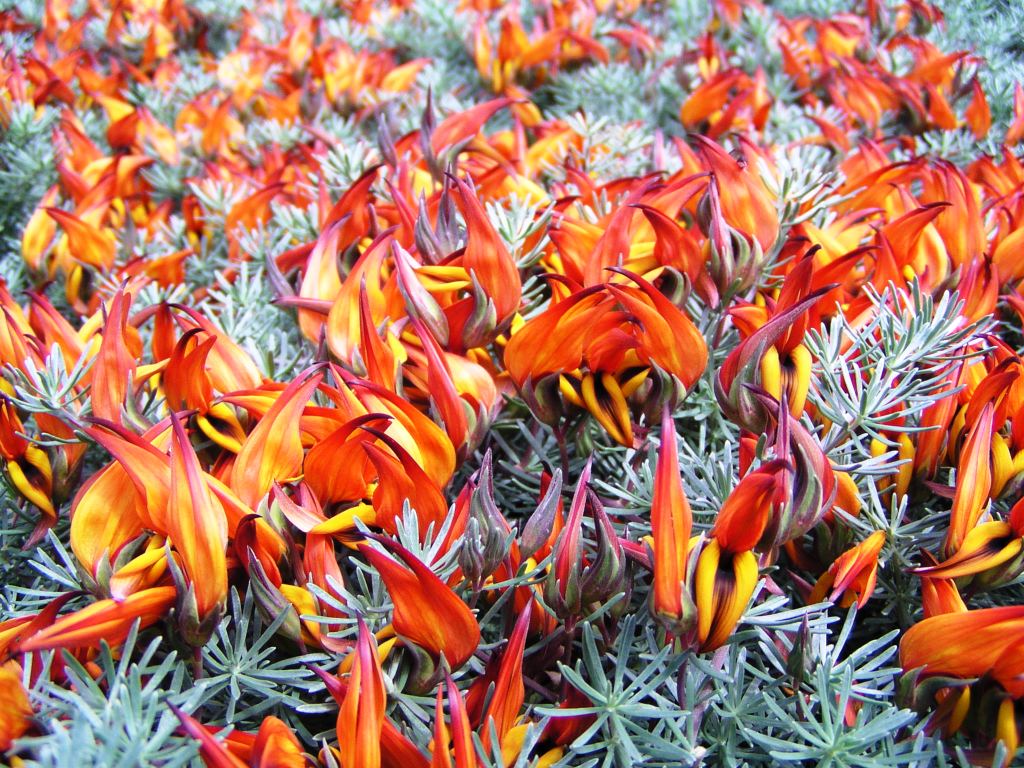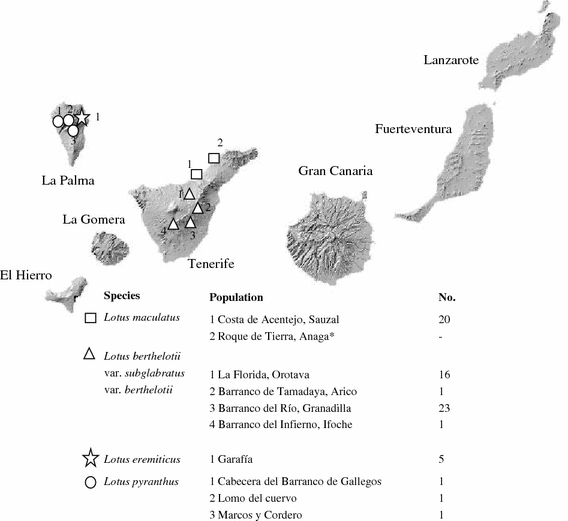Photo by VoDeTan2 Dericks-Tan licensed under the GNU Free Documentation License
Growing and propagating plants is, in my opinion, one of the most important skills humanity has ever developed. That is one of the reasons why I love gardening so much. Growing a plant allows you to strike up a close relationship with that species, which provides valuable insights into its biology. In today’s human-dominated world, it can also be an important step in preventing the extinction of some plants. Such may be the case for four unique legumes native to the Canary Islands provided it is done properly.
The Canary Islands are home to an impressive collection of plants in the genus Lotus, many of which are endemic. Four of those endemic Lotus species are at serious risk of extinction. Lotus berthelotii, L. eremiticus, L. maculatus, and L. pyranthus are endemic to only a few sites on this archipelago. Based on old records, it would appear that these four were never very common components of the island flora. Despite their rarity in the wild, at least one species, L. berthelotii, has been known to science since it was first described in 1881. The other three were described within the last 40 years after noting differences among plants being grown locally as ornamentals.
Photo by John Rusk licensed under CC BY 2.0
All four species look superficially similar to one another with their thin, silvery leaves and bright red to yellow flowers that do a great impression of a birds beak. The beak analogy seems apt for these flowers as evidence suggests that they are pollinated by birds. In the wild, they exhibit a creeping habit, growing over rocks and down overhangs. It is difficult to assess whether their current distributions truly reflect their ecological needs or if they are populations that are simply hanging on in sites that provide refugia from the myriad threats plaguing their survival.
None of these four Lotus species are doing well in the wild. Habitat destruction, the introduction of large herbivores like goats and cattle, as well as a change in the fire regime have seen alarming declines in their already small populations. Today, L. eremiticus and L. pyranthus are restricted to a handful of sites on the island of La Palma and L. berthelotii and L. maculatus are restricted to the island of Tenerife. In fact, L. berthelotii numbers have declined so dramatically that today it is considered nearly extinct in the wild.
Contrast this with their numbers in captivity. Whereas cultivation of L. eremiticus and L. pyranthus is largely restricted to island residents, L. berthelotii and L. maculatus and their hybrids can be found in nurseries all over the world. Far more plants exist in captivity than in their natural habitat. This fact has not been lost on conservationists working hard to ensure these plants have a future in the wild. However, simply having plants in captivity does not mean that the Canary Island Lotus are by any means safe.
One of the biggest issues facing any organism whose numbers have declined is that of reduced genetic diversity. Before plants from captivity can be used to augment wild populations, we need to know a thing or two about their genetic makeup. Because these Lotus can readily be rooted from cuttings, it is feared that most of the plants available in the nursery trade are simply clones of only a handful of individuals. Also, because hybrids are common and cross-pollination is always a possibility, conservationists fear that the individual genomes of each species may run the risk of being diluted by other species’ DNA.
Photo by VoDeTan2 Dericks-Tan licensed under the GNU Free Documentation License
Luckily for the Canary Island Lotus species, a fair amount of work is being done to not only protect the remaining wild plants, but also augment existing as well as establish new populations. To date, many of the remaining plants are found within the borders of protected areas of the island. Also, new areas are being identified as potential places where small populations or individuals may be hanging on, protected all this time by their inaccessibility. At the same time, each species has been seed banked and entered into cultivation programs in a handful of botanical gardens.
Still, one of the best means of ensuring these species can enjoy a continued existence in the wild is by encouraging their cultivation. Though hybrids have historically been popular with the locals, there are enough true species in cultivation that there is still reason for hope. Their ease of cultivation and propagation means that plants growing in peoples’ gardens can escape at least some of the pressures that they face in the wild. If done correctly, ex situ cultivation could offer a safe haven for these unique species until the Canary Islands can deal with the issues facing the remaining wild populations.



